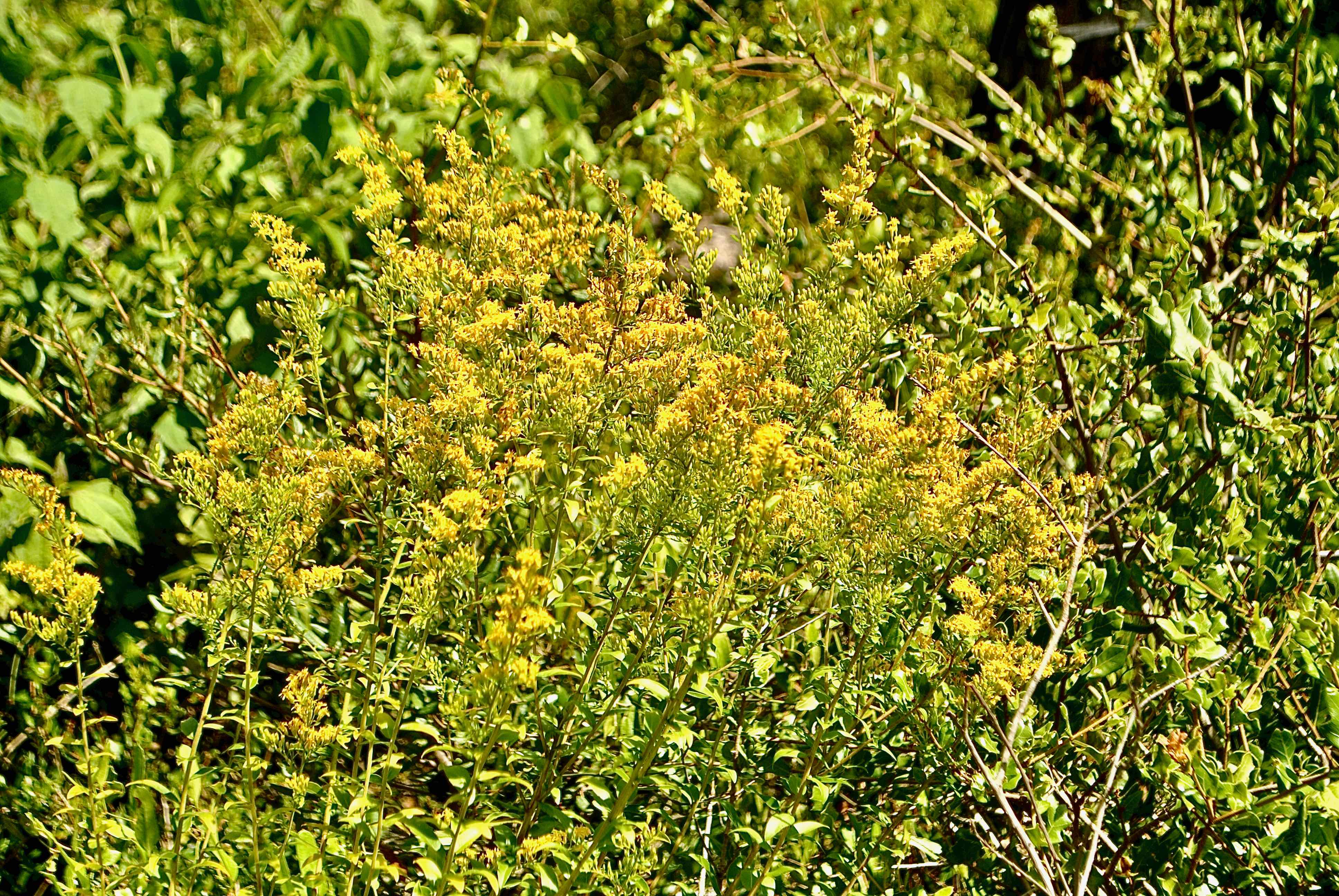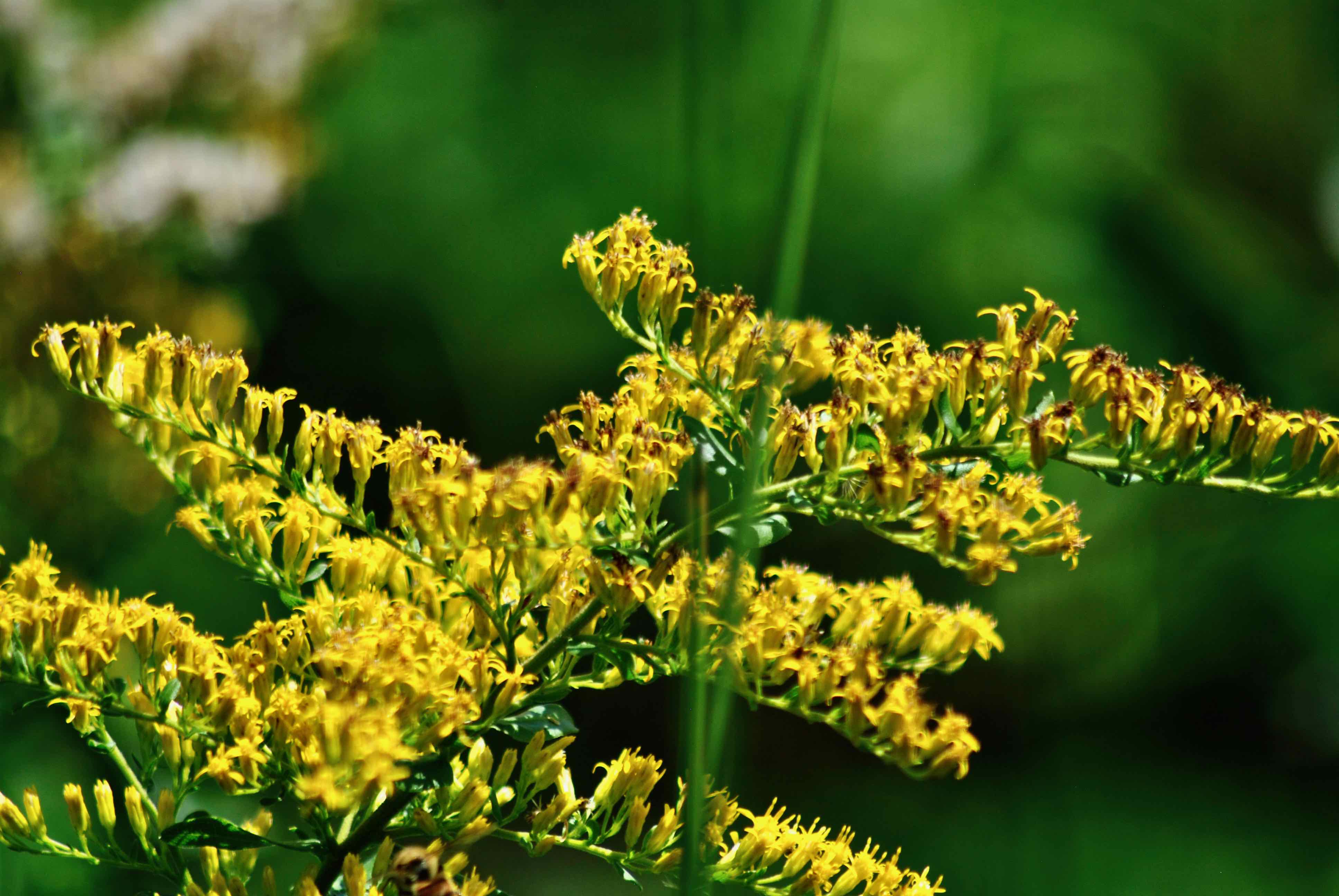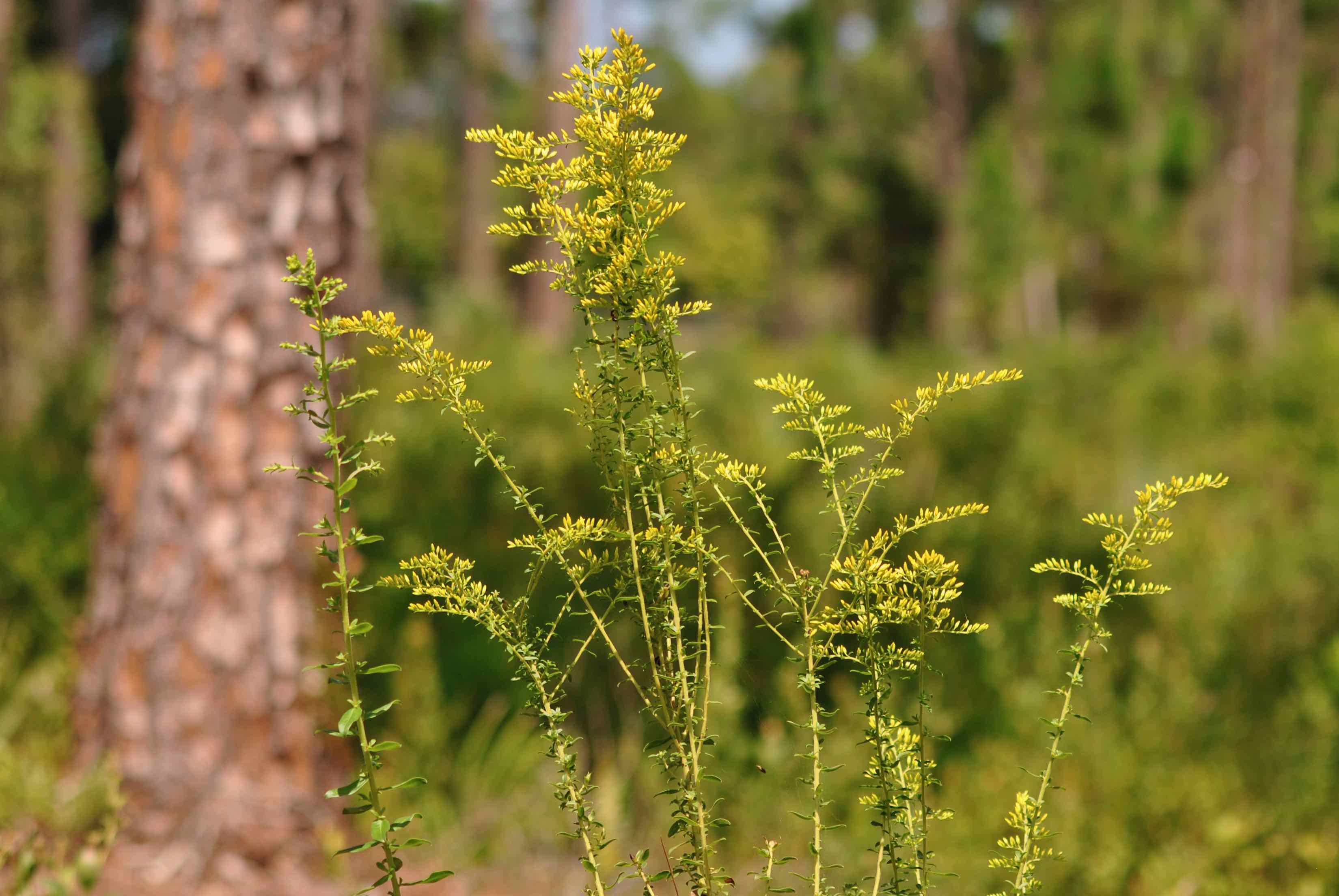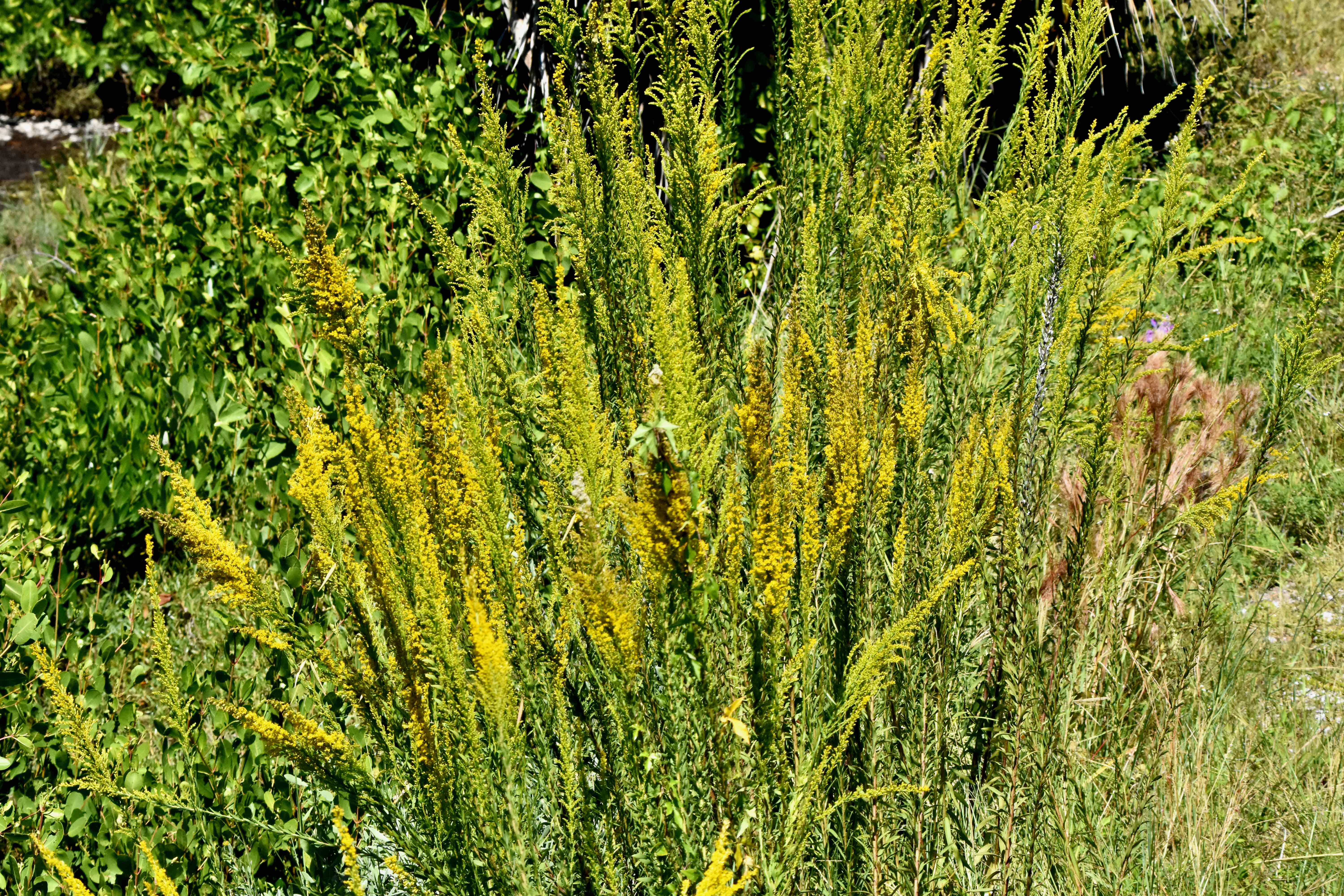
Goldenrod, photographed at Rosemary Scrub Natural Area, Boynton Beach, Palm Beach County, in July 2013.
An absolutely gorgeous flower. Few things on this earth are more inspiring than a field of goldenrod in full bloom. And its beauty is more than skin deep, as the saying goes. It plays a vital role in nature and has been both food and medicine for us humans. It even played a (very) minor role in the American Revolution.
But there is another side to goldenrod that overshadows its beauty. To many of us, the very name says allergy. It shouldn't. Despite having a reputation as a major source of the airborne pollen that makes some of us sneezingly miserable at times, goldenrod is an innocent bystander. The blame should fall on ragweed and other plants with wind-blown pollen. Goldenrod has pollen that is sticky, intended to be passed on flower to flower by bees, butterflies and other bugs rather than by wind.
Goldenrod isn't a single plant but rather a genus, Solidago, of which there are about 80 members world wide. Most are native to North America, but a few are found in Central America, South America, Europe and Asia. Goldenrod is found in every one of the 48 continguous states — Florida is home to something like 21 goldenrod species, of which 10 are found in South Florida, according to the Institute for Regional Conservation.
Goldenrod is one of those plants that you just know when you see it. Figuring out the type of goldenrod is a whole 'nother matter, at least for most of us. For one thing, plants within a given species can vary in form. For another, goldenrods of different species will hybridize with each other and display characteristics of both parents.
On the other hand, there are ways to narrow down the list. Canadian goldenrod, for example, is rare in South Florida, found only in Lee County. If you're looking at a goldenrod in Broward, you're probably not looking at Canadian goldenrod. The IRC has a searchable database for plants it's catalogued at parks and preserves within South Florida. Punch up the plant list for Yamato Scrub Natural Area and you'll see five goldenrod species listed. Keys to keep in mind include the habitat where the plant grows; the shape of the flower head; leaf size, shape and texture; the height of the plant (some can be six feet tall or more, others might only reach a few feet); texture of the stem; when it's blooming (generally goldenrods blossom in late summer into fall, but different species will vary within that range — some will bloom much earlier, some year round); and how much it suckers. All goldenrods produce suckers (new plants that shoot off of rhizomes, or underground stems) but some are more vigorous at it than others. Even the smell of the crushed leaves can be a clue (Solidago odora, Chapman's goldenrod).
As we said earlier, goldenrod plays several important roles in nature. Most prominently, it provides nectar for bees and butterflies. Seaside goldenrod's large, gorgeous yellow flowers, for example, help fuel monarch butterflies as they make their way south during their annual migration. In winter, vegetation from the previous summer provides habitat for gall-producing insects, including some beneficial wasps. The larvae inside those galls become an important source of food for birds. Its dense vegetation provides cover for nesting birds.
As we noted goldenrods are generally fall bloomers, especially up north. The Omaha tribe of the Great Plains used the fact as a demarcation of sorts on their calendar. They noted that when away on their summer buffalo hunt they started to see late goldenrod (S. gigantea) in bloom, their corn crops back home were beginning to ripen.
After the Boston Tea Party, the tea drinkers of New England decided they needed to sip something more patriotic than the Chinese varieties the British shipped to the Colonies. So they made a substitute they called liberty tea using the dried leaves and flowers of S. Odora — Chapman's goldenrod. The stuff tasted reasonably well, so much so that the Americans started to export it to China. Chapman's, by the way, happens to grow in South Florida. Goldenrods are also edible, although some consider them nothing more than famine food.
Goldenrod has been used to make dye. Yellow, of course. Thomas Edison tried to make rubber from goldenrod, with a degree of success — Henry Ford gave Edison a Model T with tires made of goldenrod rubber. But commercially, goldenrod never quite made it to the mass market, the invention of synthetic rubber during World War II making it unnecessary. It's also been used in fibermaking as a substitute for hemp.
It's been used medicinally for thousands of years, in Europe dating back at least to Roman times and probably before. Its uses include as a diuretic, as an anti-inflammatory and as an emetic (to cause vomiting). Various people have used it to treat cancer, burns and fever. But perhaps the oddest use was as a carminative — to reduce flatulence. We can see the marketing campaign now: "Goldenrod: It'll keep the wind out of your sails!"



